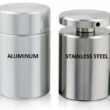What is the difference between a cyclone and a tsunami?
Two natural phenomena that cause great destruction and death in the world are cyclones and tsunamis. They are completely different in the manner in which they form and the manner in which they may landfall. A cyclone develops over the warm waters in the tropical regions of the world and develops as wind blows in a circular movement around an area of atmospheric pressure. A tsunami develops under the water as a result of an earthquake, a landslide, the eruption of a volcano or any type of disturbance that would cause a shift to occur in the ocean floor.
Any type of major agitation under the surface of the water can spark a tsunami. The cause could even be the recession of water as it pulls back from the shoreline. A tsunami can occur anywhere in the world but according to the records that have been kept for these natural occurrences, the majority of them have been in the Pacific regions of the world. The word is Japanese in origin. It comes from the words “tsu , which means harbor and “nami”, which means rains. The occurrence can be accurately predicted and the people living in the area warned to evacuate to higher ground, especially if the information about the magnitude and the location of the earthquake is available. In textbooks, you may see that a tsunami is called a seismic sea wave.
A cyclone, though, has winds that swirl inward. The winds of a cyclone can rotate clockwise or counter clockwise. Cyclones can occur anywhere and there is no specific area that is more prone to them than any other. There are six main types of cyclones and they are known by different names depending on the part of the world in which they occur:
- Polar
- Polar low
- Extratropical
- Subtropical
- Tropical
- Mesotropical
This information shows how important the work of seismologists and geologists is in making sure that people living along the coasts of countries are safe.



